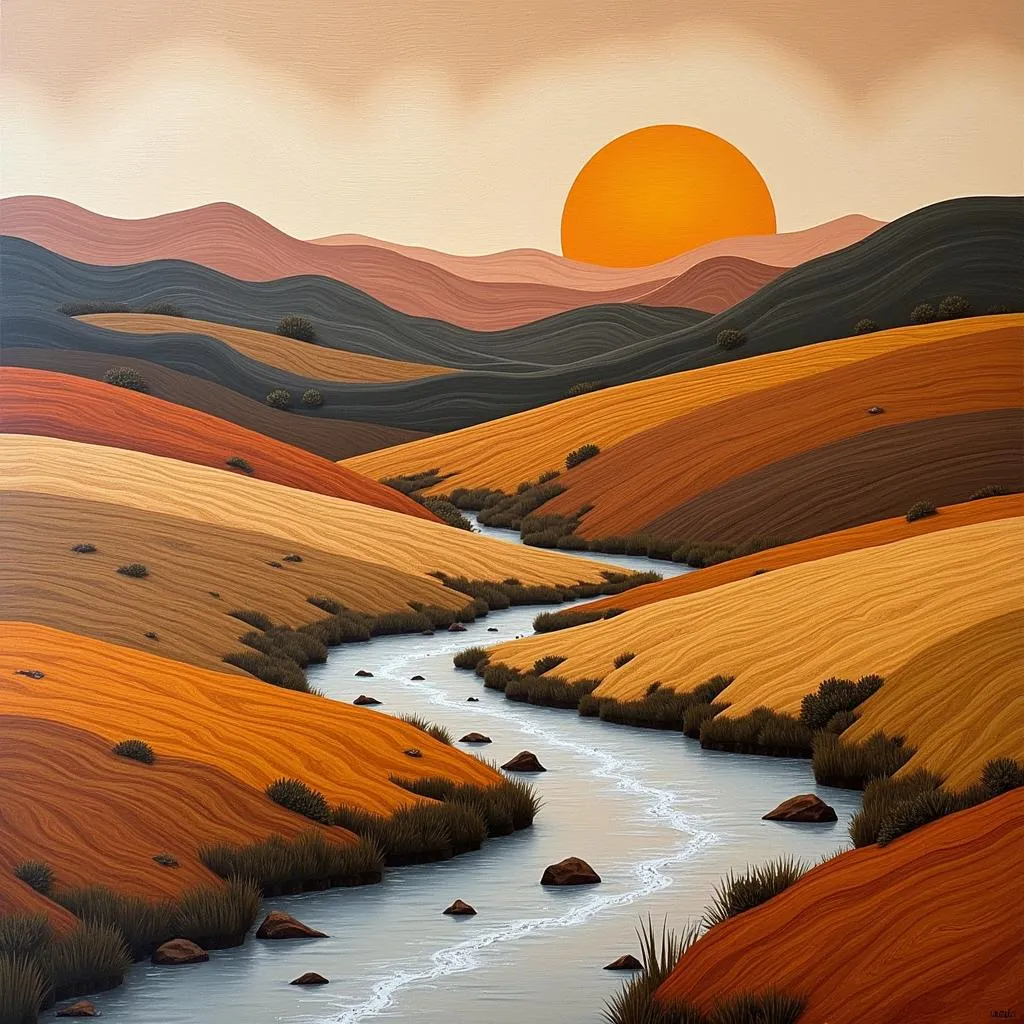Exploring the Magic of Children’s Books Art
Children’s books art is more than just pretty pictures; it’s a gateway to imagination, a language that speaks directly to a child’s heart. From whimsical illustrations in fairy tales to vibrant spreads in educational books, art breathes life into stories and makes learning an adventure.
The Power of Visual Storytelling in Children’s Books
Visual storytelling is at the heart of children’s book art. Every brushstroke, every color choice, contributes to the narrative, drawing young readers into the world crafted on the pages. . A single image can convey complex emotions, introduce characters, and set the stage for exciting adventures, all before a single word is read.
Engaging Young Minds Through Art
Children are naturally drawn to visuals. Bright colors, bold lines, and familiar shapes capture their attention and spark their curiosity. Art in children’s books uses these elements strategically to create a captivating reading experience. Whether it’s the adorable antics of a mischievous cat or the awe-inspiring vastness of outer space, art makes the intangible tangible and the complex comprehensible.
.
Styles and Techniques in Children’s Book Illustration
The world of children’s book art is brimming with diverse styles and techniques. From the delicate lines of watercolor illustrations to the bold strokes of digital art, each approach brings a unique charm to the stories they portray.
- Watercolor: This classic medium lends a soft and dreamy quality, perfect for fairy tales and whimsical stories.
- Acrylic: Known for its vibrant colors and bold textures, acrylic is often used to create energetic and eye-catching illustrations.
- Digital Art: With its limitless possibilities, digital art allows illustrators to experiment with different textures, effects, and styles, creating truly immersive visual experiences.
The Evolution of Children’s Book Art
Like all art forms, children’s book art has evolved significantly over time. Early illustrations were often simple woodcuts, while today’s artists have a vast array of tools and techniques at their disposal. The rise of digital art has been particularly transformative, opening up new avenues for creativity and pushing the boundaries of visual storytelling.
The Importance of Diversity and Representation in Children’s Books Art
In an increasingly interconnected world, it’s crucial for children to see themselves reflected in the books they read. Diversity in children’s book art goes beyond simply representing different ethnicities; it encompasses a wide range of experiences, abilities, and family structures.
. When children see characters who look like them, come from similar backgrounds, or share similar experiences, it fosters a sense of belonging and empowers them to embrace their individuality.
Creating Lasting Impressions: The Legacy of Children’s Book Art
The impact of children’s book art extends far beyond childhood. The images we encounter in our formative years stay with us, shaping our aesthetic sensibilities and influencing our own creative endeavors. Think back to your favorite childhood books; the chances are, you can still vividly recall the illustrations that brought those stories to life.
From the whimsical world of Leisure Arts coloring books to the iconic imagery of Harry Potter Mary Grandpre art, children’s book art leaves an indelible mark on our imaginations.
Conclusion
Children’s book art is a powerful tool for sparking imagination, fostering a love of reading, and shaping young minds. By embracing diversity, pushing creative boundaries, and staying true to the magic of storytelling, artists and illustrators continue to create visual masterpieces that will captivate generations to come. Let’s continue to nurture a love of reading and a celebration of art in the hearts of children everywhere.
FAQs
1. What are some popular styles of children’s book art?
Some popular styles include watercolor, acrylic, digital art, collage, and mixed media.
2. Why is diversity in children’s book illustration important?
Diversity ensures that all children feel seen and represented, fostering inclusivity and a sense of belonging.
3. How has technology influenced children’s book art?
Technology, particularly digital art, has opened up new avenues for creativity, allowing artists to experiment with different effects and styles.
4. What is the role of visual storytelling in children’s books?
Visual storytelling helps engage young readers, convey emotions, introduce characters, and bring stories to life.
5. How can I find more diverse children’s books?
Many online resources and bookstores specialize in promoting diverse children’s literature.
Need Help Finding the Perfect Art?
We’re here to help! Contact us at:
Phone: 02462573573
Email: [email protected]
Visit us at: Savico Megamall, 7-9 Đ. Nguyễn Văn Linh, Gia Thụy, Long Biên, Hà Nội 10000, Việt Nam.
Our team is available 24/7 to assist you in finding the perfect art for your needs.


